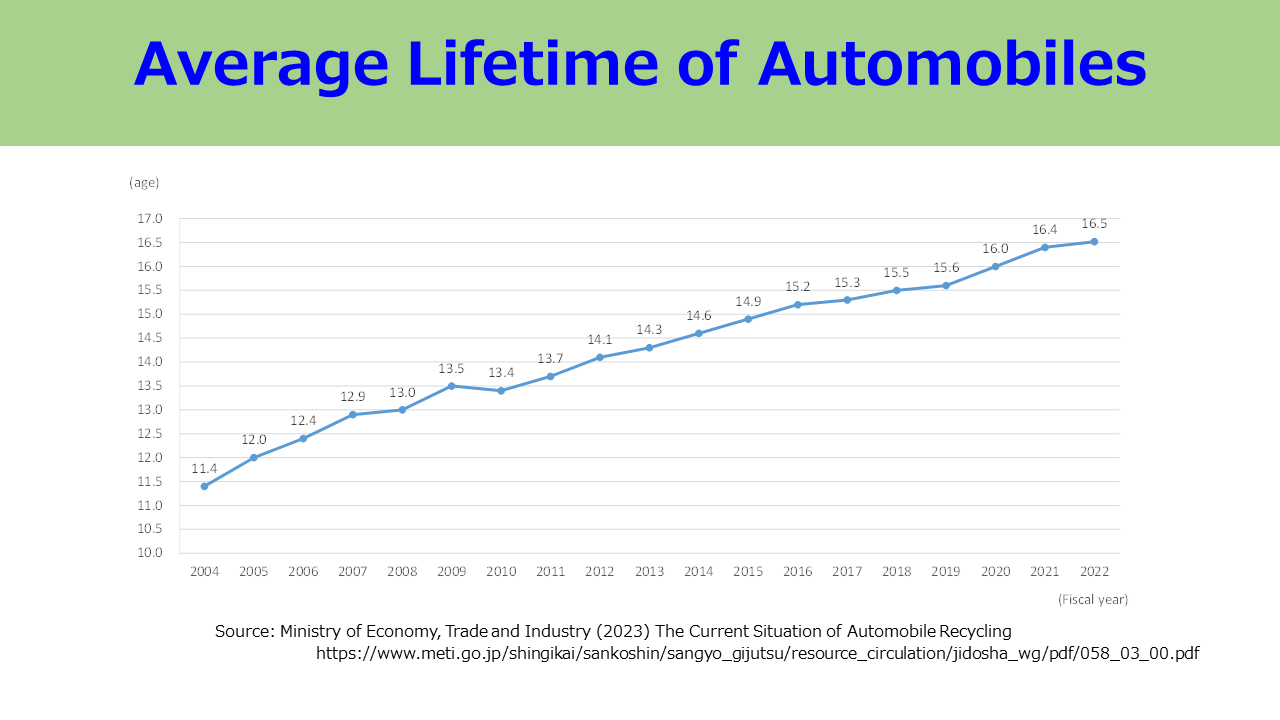The life-expectancy of an automobile in Japan
4/1 2024
Author: Eiji Hosoda
Since End-of-Life Vehicle Recycling Law was introduced in Japan in 2002, the quality of recycling technology of an end-of-life vehicle (ELV) has been gradually enhanced, and the effective utilization rate (material recycling rate plus thermal recovery rate) of ELV has increased to 99% from 85% which had been recorded before the law was introduced (Hosoda 2024). Seeing this, we may say that the ELV recycling under the recycling law has contributed to realization of a circular economy.
Yet, we have to remember that the principle of waste hierarchy is an essential factor for creating a circular economy, and according to the principle, reduction of waste should come first, rather than reuse or recycling. Then, it must be asked how reduction of waste could be made for ELV. One answer would possibly be long-time use of an automobile, although there could be other options for reducing waste of ELV such as automobile shredder residue.
Let us see how the average lifetime of an automobile has changed for the last nineteen years. The figure demonstrates the trend of life-expectancy of ELV in Japan. It was 16.5 years in 2022, five years longer than 11.4 years recorded in 2004. The trend of long-time use of an automobile is clear.

What has created this trend? Although it is not so easy to answer this question with empirical evidences, we could consider some possible reasons. The first one is a technical reason; the durability of an automobile has increased by, say, rapid progress of painting/coating technology. Enhancement of the quality of engine parts is also considered to have contributed to improvement of durability of an automobile.
The second is an economic reason; demand for repurchase of a new automobile has shrunk possibly due to a decline in purchasing power of consumers. This may be caused by the long-term depression of the Japanese economy. Some quality used cars have allegedly attracted more consumers to a used-car market.
Incidentally, it is worth pointing out that around 1.5 million of ELVs are exported to foreign countries, mainly developing countries, from Japan, so that the actual life-time of an automobile is considered to be longer than 16.5 years. Considering that a number of used parts and/or rebuilt parts of ELV are also exported, the life-expectancy of car parts is considered to be longer than that of an automobile itself.
Reference:
Hosoda, E. (2024) “End-of-Life Vehicle Recycling in Japan”, read at the 10th International Scientific Conference on Material Cycles and Waste Management - Circular economy solutions on 16th March 2024, https://www.tries.u-tokai.ac.jp/PDF/HosodaELV.pdf
